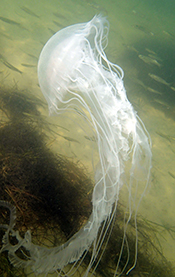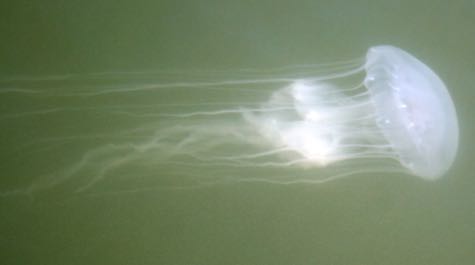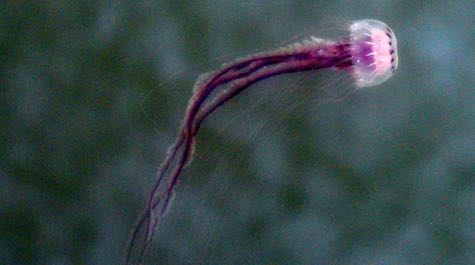Bay Nettle
 Scientific Name
Scientific Name
Chrysaora chesapeakei (formerly known as Chrysaora quinquecirrha). Learn why the name was changed.
Distribution
The bay nettle is the most common jelly in Chesapeake Bay during summer, and can be present from May to October. It is generally confined to brackish waters with salinities between 10 and 16 parts per thousand (ppt; seawater is typically 32-36 ppt). It prefers water temperatures between 78 - 86º F.
Sting
The sting is moderately painful, but not dangerous unless there is an allergic reaction.
Size
An adult can have a bell to up to 8 inches in diameter, with 24 tentacles several feet long.
Color
Nettles in the upper reaches of Chesapeake Bay are usually milky white; those in the lower, saltier portions of the Bay are more likely to have reddish-brown to purplish stripes or splotches.
Distinguishing Features
- Bell with fairly thick dome
- Tentacles closely and evenly spaced around bell
- 4 long and ruffled oral arms emerge from under bell



